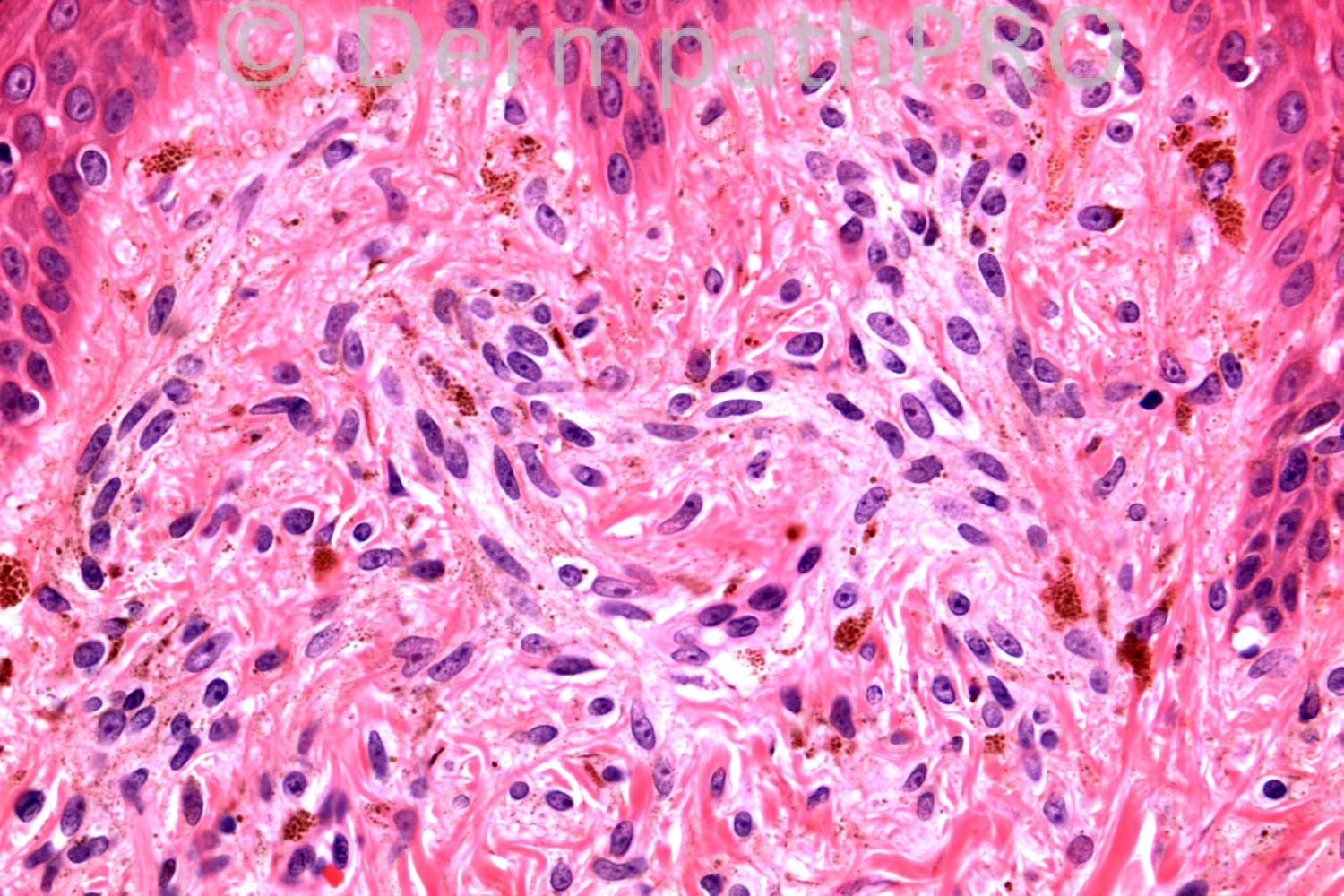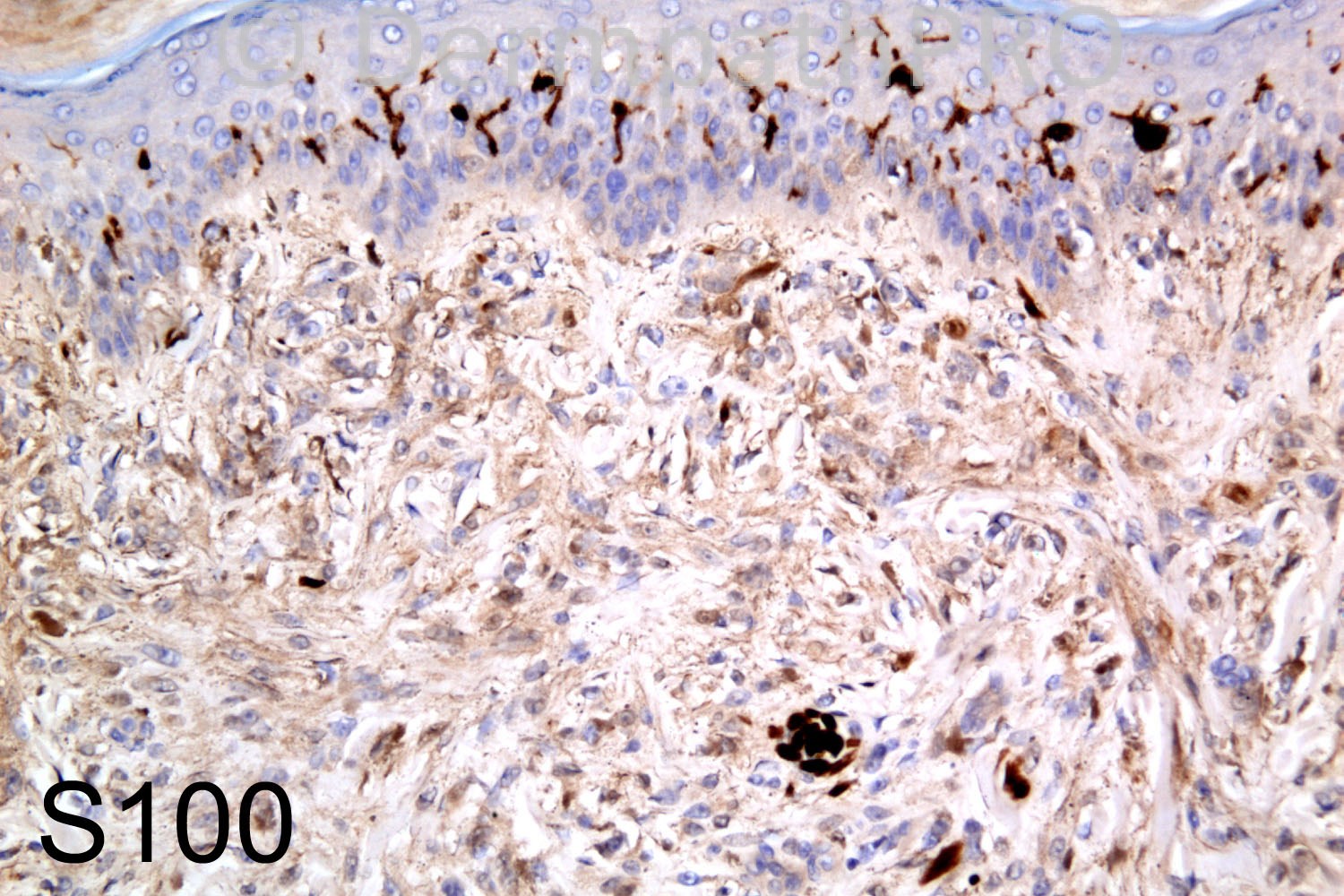Case Number : Case 786 - 21st June Posted By: Guest
Please read the clinical history and view the images by clicking on them before you proffer your diagnosis.
Submitted Date :
16 years-old female, lesion on foot. ?Spitz naevus
Case posted by Dr. Richard Carr.
Case posted by Dr. Richard Carr.







User Feedback